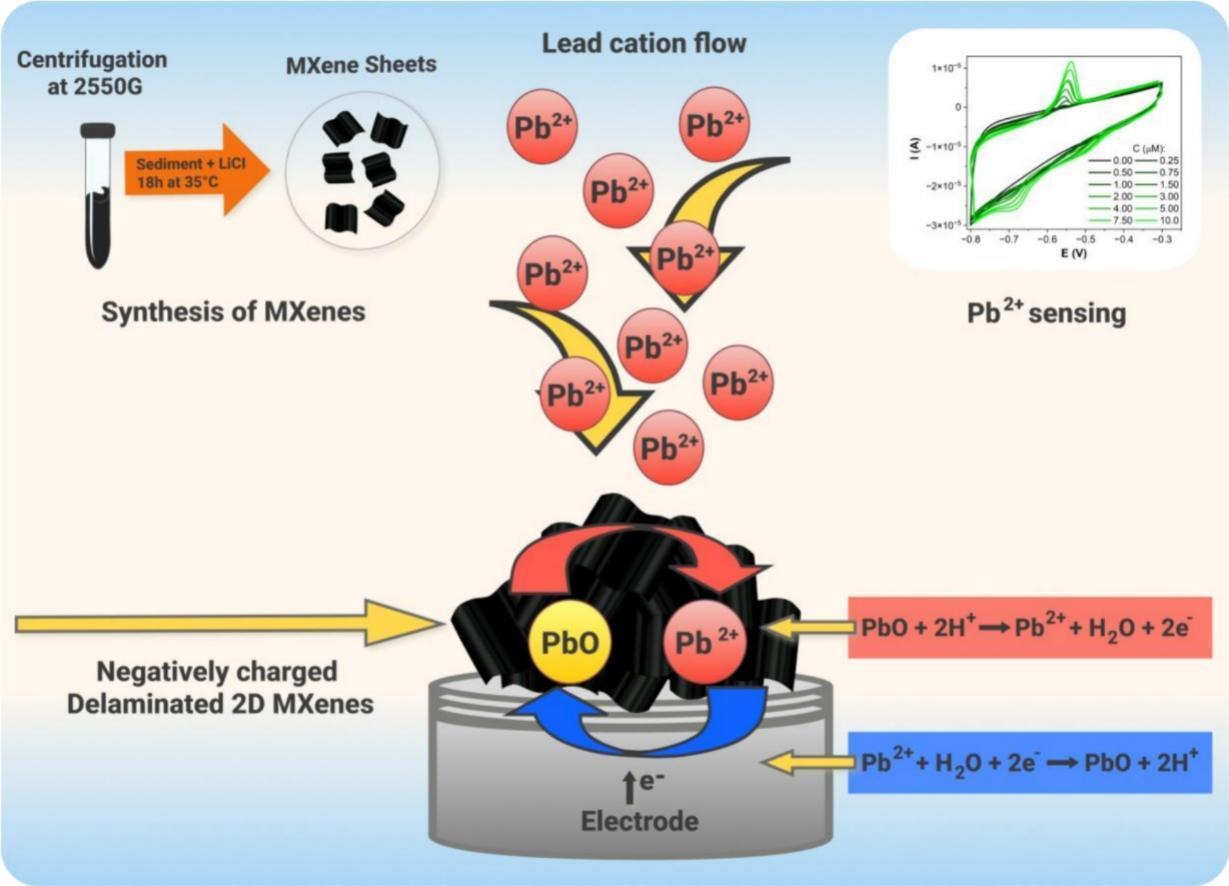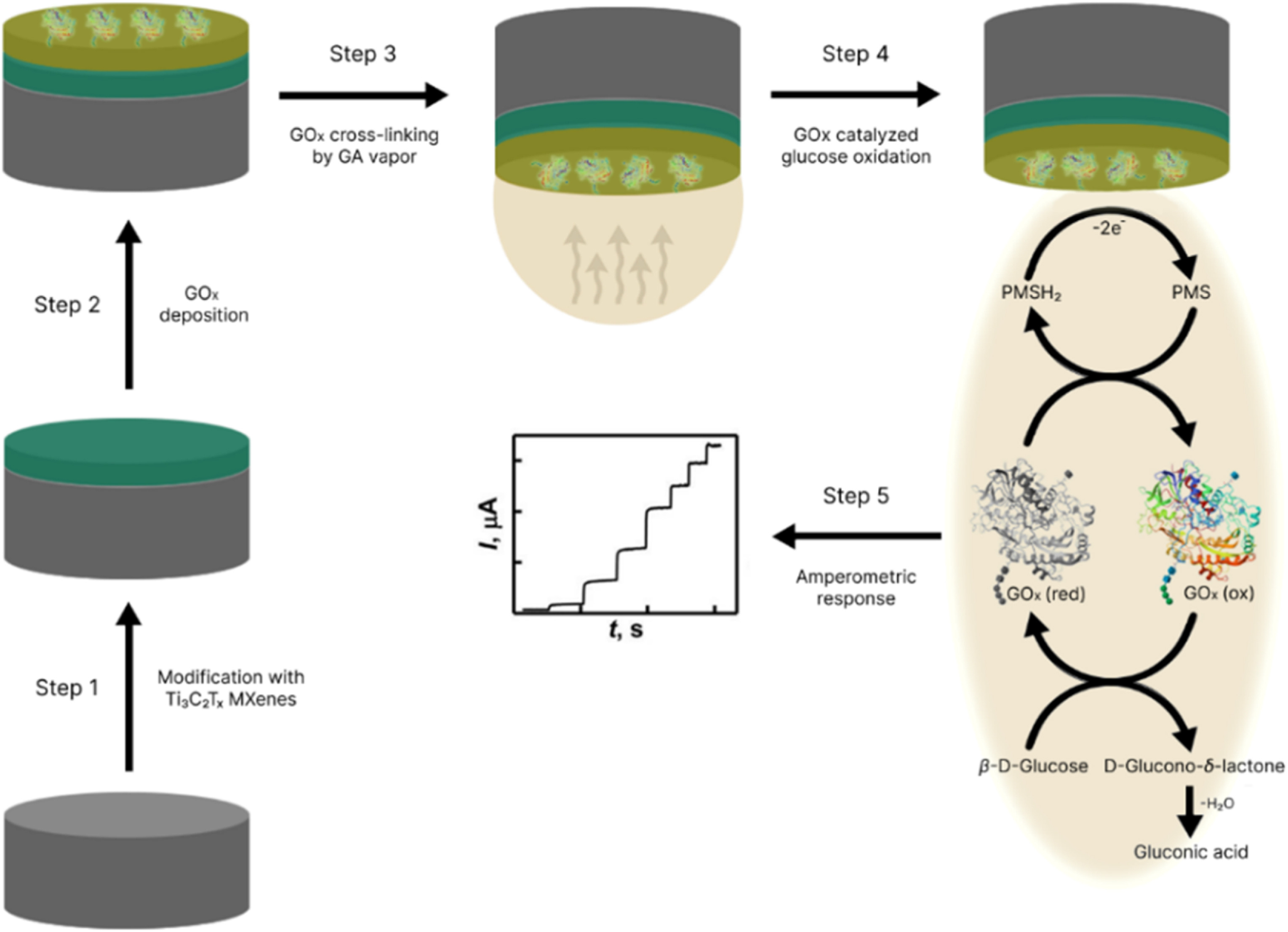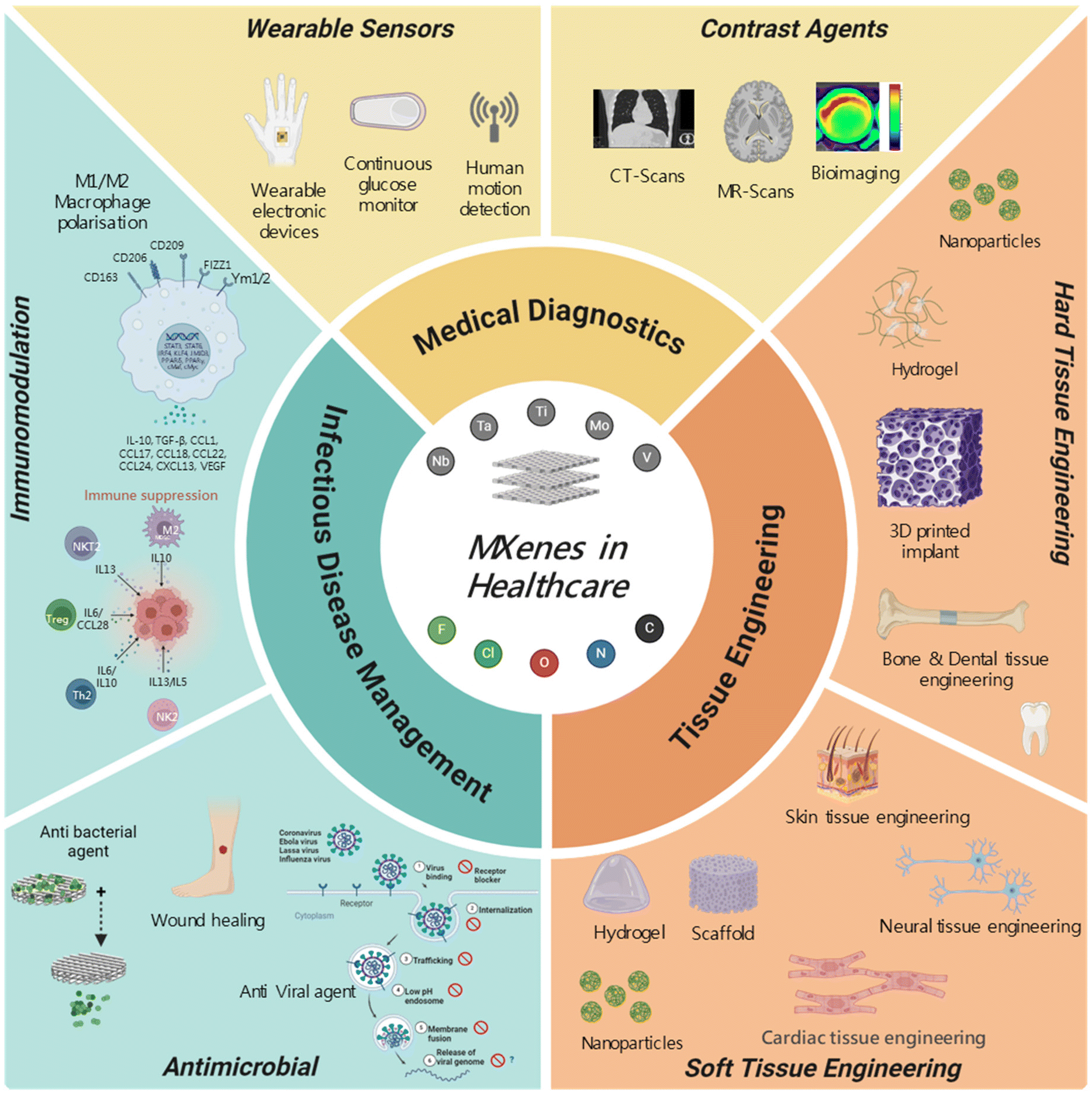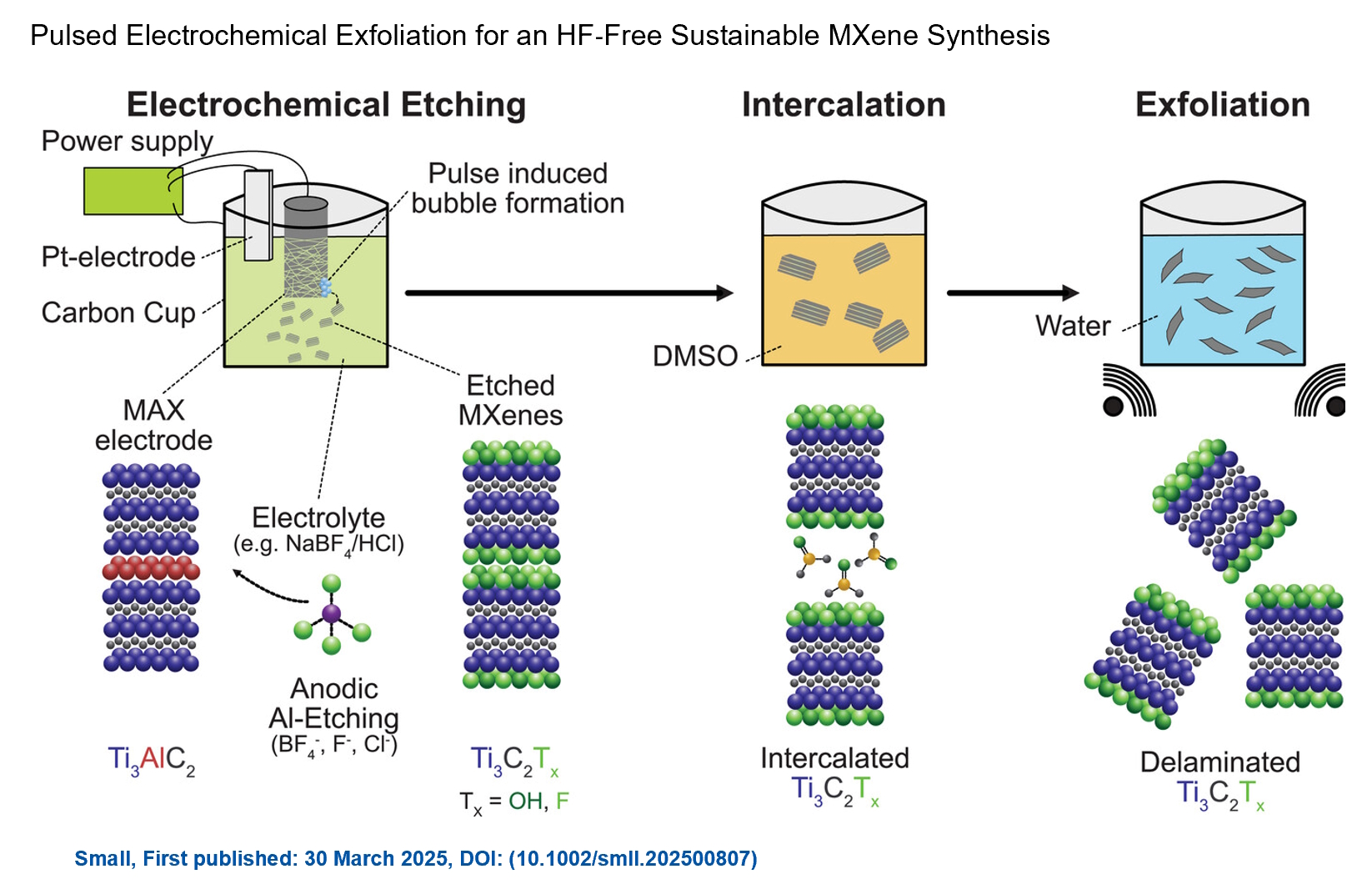Electrochemical real-time sensor for the detection of Pb(II) ions based on Ti3C2Tx MXene
We are proud to present our collaborative paper on an electrochemical real-time sensor for the selective detection of Pb(II) ions, powered by Ti₃C₂Tₓ MXene. Big thank you to our collaborators from Vilnius for extensive experiments and to make it published!
Full article available: Sarunas Zukauskas, Alma Rucinskiene, Simonas Ramanavicius, Anton Popov, Gediminas Niaura, Ivan Baginskiy, Veronika Zahorodna, Serhii Dukhnovskiy, Oleksiy Gogotsi, Arunas Ramanavicius, Electrochemical real-time sensor for the detection of Pb(II) ions based on Ti3C2Tx MXene,Science of The Total Environment, Volume 950, 2024, 175190, https://doi.org/10.1016/j.scitotenv.2024.175190
Why this matters: Lead contamination is a serious public health issue—even trace amounts of Pb²⁺ can cause developmental and neurological disorders. Detecting it selectively in complex samples has remained a challenge—until now.
Highlights:
• Electrochemical Pb2+ ion sensor based on delaminated Ti3C2Tx MXene was developed.
• Sensor was capable to detect selectively low concentrations of Pb2+ in solution containing common metal ions.
• The proposed reaction mechanism is based on reversible transition between Pb2+ ions and PbO at the MXene layer.
• Sensitivity of sensor towards Pb2+ ions and the limit of detection were determined.
• Linear response was in a range of 0,15–1 μM, with a sensitivity of 26.7 μA/μM and LOD of 48.7 nM.
Abstract
Lead ions are especially harmful to human health, causing significant developmental and behavioral abnormalities even at small concentrations. In real-life samples, lead ions are present in mixtures with other metal ions, creating a challenge to detect it selectively at low quantities. To address these challenges, we prepared an electrochemical sensor based on delaminated Ti3C2Tx MXene, which can selectively detect low concentrations of Pb2+ in a solution containing other common metal ions. Cyclic voltammetry was applied as an electrochemical detection method.

The proposed reaction mechanism involves a reversible transition between Pb2+ ions and PbO at the MXene-based layer. The sensitivity of the sensor towards Pb2+ ions and a limit of detection were determined. The sensor, as prepared, had a linear response range within 0.15–1.0 μM, with a sensitivity of 26.7 μA/μM and LOD value of 48.7 nM, which meets the requirements set by the World Health Organization.
The tested system possesses further significant advantages in the low time required for sample preparation, measurement and analysis. This work lays the foundation for further development of in situ electrochemical sensors based on MXenes and their potential integration into lab-on-a-chip systems, enabling fast, portable, and cost-effective measurements for a wide range of applications.
To cite: Sarunas Zukauskas, Alma Rucinskiene, Simonas Ramanavicius, Anton Popov, Gediminas Niaura, Ivan Baginskiy, Veronika Zahorodna, Serhii Dukhnovskiy, Oleksiy Gogotsi, Arunas Ramanavicius, Electrochemical real-time sensor for the detection of Pb(II) ions based on Ti3C2Tx MXene,Science of The Total Environment, Volume 950, 2024, 175190, ISSN 0048-9697, https://doi.org/10.1016/j.scitotenv.2024.175190



 Highlights
Highlights We are excited to share that our Carbon-Ukraine (Y-Carbon LLC) company participated in the I2DM Summit and Expo 2025 at Khalifa University in Abu-Dhabi! Huge thanks to Research & Innovation Center for Graphene and 2D Materials (RIC2D) for hosting such a high-level event.It was an incredible opportunity to meet brilliant researchers and innovators working on the next generation of 2D materials. The insights and energy from the summit will definitely drive new ideas in our own development.
We are excited to share that our Carbon-Ukraine (Y-Carbon LLC) company participated in the I2DM Summit and Expo 2025 at Khalifa University in Abu-Dhabi! Huge thanks to Research & Innovation Center for Graphene and 2D Materials (RIC2D) for hosting such a high-level event.It was an incredible opportunity to meet brilliant researchers and innovators working on the next generation of 2D materials. The insights and energy from the summit will definitely drive new ideas in our own development. Carbon-Ukraine team had the unique opportunity to visit XPANCEO - a Dubai-based deep tech startup company that is developing the first smart contact lenses with AR vision and health monitoring features, working on truly cutting-edge developments.
Carbon-Ukraine team had the unique opportunity to visit XPANCEO - a Dubai-based deep tech startup company that is developing the first smart contact lenses with AR vision and health monitoring features, working on truly cutting-edge developments. Our Carbon-Ukraine team (Y-Carbon LLC) are thrilled to start a new RIC2D project MX-Innovation in collaboration with Drexel University Yury Gogotsi and Khalifa University! Amazing lab tours to project collaborators from Khalifa University, great discussions, strong networking, and a wonderful platform for future collaboration.
Our Carbon-Ukraine team (Y-Carbon LLC) are thrilled to start a new RIC2D project MX-Innovation in collaboration with Drexel University Yury Gogotsi and Khalifa University! Amazing lab tours to project collaborators from Khalifa University, great discussions, strong networking, and a wonderful platform for future collaboration.
 MXenes potential applications include sensors, wound healing materials, and drug delivery systems. A recent study explored how different synthesis methods affect the safety and performance of MXenes. By comparing etching conditions and intercalation strategies, researchers discovered that fine-tuning the surface chemistry of MXenes plays a crucial role in improving biocompatibility. These results provide practical guidelines for developing safer MXenes and bring the field one step closer to real biomedical applications.
MXenes potential applications include sensors, wound healing materials, and drug delivery systems. A recent study explored how different synthesis methods affect the safety and performance of MXenes. By comparing etching conditions and intercalation strategies, researchers discovered that fine-tuning the surface chemistry of MXenes plays a crucial role in improving biocompatibility. These results provide practical guidelines for developing safer MXenes and bring the field one step closer to real biomedical applications. An excellent review highlighting how MXene-based sensors can help tackle one of today’s pressing environmental challenges — heavy metal contamination. Excited to see such impactful work moving the field of environmental monitoring and sensor technology forward!
An excellent review highlighting how MXene-based sensors can help tackle one of today’s pressing environmental challenges — heavy metal contamination. Excited to see such impactful work moving the field of environmental monitoring and sensor technology forward!
 Carbon-Ukraine team was truly delighted to take part in the kickoff meeting of the ATHENA Project (Advanced Digital Engineering Methods to Design MXene-based Nanocomposites for Electro-Magnetic Interference Shielding in Space), supported by NATO through the Science for Peace and Security Programme.
Carbon-Ukraine team was truly delighted to take part in the kickoff meeting of the ATHENA Project (Advanced Digital Engineering Methods to Design MXene-based Nanocomposites for Electro-Magnetic Interference Shielding in Space), supported by NATO through the Science for Peace and Security Programme. Exellent news, our joint patent application with Drexel University on highly porous MAX phase precursor for MXene synthesis published. Congratulations and thanks to all team involved!
Exellent news, our joint patent application with Drexel University on highly porous MAX phase precursor for MXene synthesis published. Congratulations and thanks to all team involved! Our team was very delighted to take part in International Symposium "The MXene Frontier: Transformative Nanomaterials Shaping the Future" – the largest MXene event in Europe this year!
Our team was very delighted to take part in International Symposium "The MXene Frontier: Transformative Nanomaterials Shaping the Future" – the largest MXene event in Europe this year!  Last Call! Have you submitted your abstract for IEEE NAP-2025 yet? Join us at the International Symposium on "The MXene Frontier: Transformative Nanomaterials Shaping the Future" – the largest MXene-focused conference in Europe this year! Final Submission Deadline: May 15, 2025. Don’t miss this exclusive opportunity to showcase your research and engage with world leaders in the MXene field!
Last Call! Have you submitted your abstract for IEEE NAP-2025 yet? Join us at the International Symposium on "The MXene Frontier: Transformative Nanomaterials Shaping the Future" – the largest MXene-focused conference in Europe this year! Final Submission Deadline: May 15, 2025. Don’t miss this exclusive opportunity to showcase your research and engage with world leaders in the MXene field! We are excited to announce the publication of latest review article on MXenes in Healthcare. This comprehensive review explores the groundbreaking role of MXenes—an emerging class of 2D materials—in revolutionizing the fields of medical diagnostics and therapeutics. Read the full article here: https://doi.org/10.1039/D4NR04853A.
We are excited to announce the publication of latest review article on MXenes in Healthcare. This comprehensive review explores the groundbreaking role of MXenes—an emerging class of 2D materials—in revolutionizing the fields of medical diagnostics and therapeutics. Read the full article here: https://doi.org/10.1039/D4NR04853A. Congratulations and thank you to our collaborators from TU Wien and CEST for very interesting work and making it published! In this work, an upscalable electrochemical MXene synthesis is presented. Yields of up to 60% electrochemical MXene (EC-MXene) with no byproducts from a single exfoliation cycle are achieved.
Congratulations and thank you to our collaborators from TU Wien and CEST for very interesting work and making it published! In this work, an upscalable electrochemical MXene synthesis is presented. Yields of up to 60% electrochemical MXene (EC-MXene) with no byproducts from a single exfoliation cycle are achieved. Congratulations to all collaborators with this interesting joint work!
Congratulations to all collaborators with this interesting joint work!